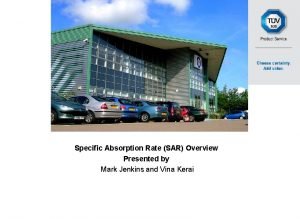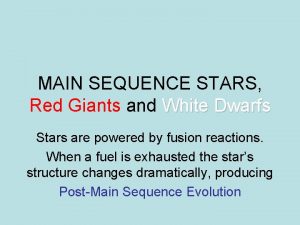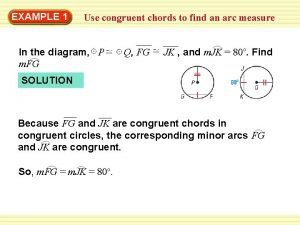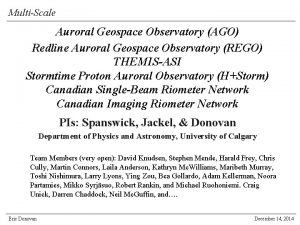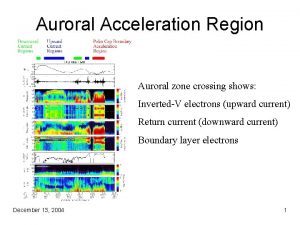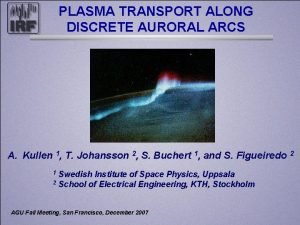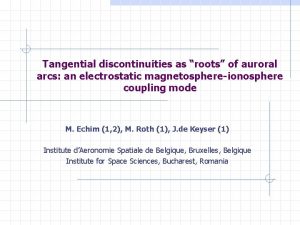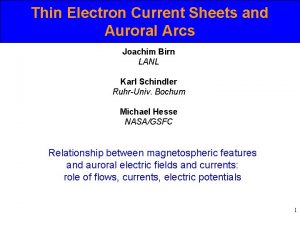Statistical analysis of SAR arcs detached from auroral










- Slides: 10

Statistical analysis of SAR arcs detached from auroral oval based on all-sky imaging observations Yuki Takagi 1*, Kazuo Shiokawa 1, Yuichi Otsuka 1, and Martin Connors 2 1. Institute for Space-Earth Environmental Research, Nagoya University, Japan 2. Athabasca University, Canada

Introduction Ionosphere Ring current Plasmasphere Stable Auroral Red (SAR) arcs are the optical phenomenon caused by low-energy electron precipitation into the ionospheric F layer from the interaction region between the ring current and the plasmasphere. [Kozyra et al. , 1987] • Coulomb collisions between ring current and thermal electrons were first proposed as the energy source for SAR arcs. [Cole, 1965] • Observations and theory of the formation of SAR arcs were constructed [Rees & Roble, 1975]

Introduction SAR arcs have been observed at mid-latitudes during geomagnetic storms (e. g. , Rees and Roble, 1975; Mendillo et al. , 2016). Shiokawa et al. (2009) reported an event of SAR arc detachment at Athabasca. However, statistical analysis of SAR arc detachment has not been done yet. [Shiokawa et al. , 2009] Purpose: We make a statistical analysis of SAR arc detachment observed at Athabasca in 2006 -2016.

Observation • Place: Athabasca Observatory, Canada (61. 1 MLAT, L=4. 2) • Instrument: an all-sky imager with a narrowband interference filter (630. 0 nm) • Periods: 2006– 2016 • Total: 163 events

Observation Event 1 (Sept. 14, 2009) Event 2 (Oct. 2, 2008)

Criteria of SAR Arc Event Selection Definition of SAR arc in our study 630. 0 nm (1)intensification and lower-latitude expansion of high-latitude aurora and subsequent separation of SAR arcs in the 630 -nm keogram (2)the corresponding emission is not clearly observed in the 557. 7 nm keogram Extracted parameters 557. 7 nm (1) start time: start time of intensification of high-latitude aurora (2) end time: the time at which the SAR arc emission disappears or it is masked by other auroral activities or clouds. (3) Lowest latitude of SAR arcs

MLT and yearly variation • The occurrence rate of SAR arc detachment was highest in 20 -22 MLT. →This could be due to the duskward drift of the ring current ions, which are the energy source of a SAR arc. • The occurrence rate of SAR arc detachment was low in the solar maximum and minimum, and high during the period of increase or decrease of solar activity. The occurrence rate also correlated well with geomagnetic activities represented by the Ap index. →Alexeyev and Ievenko [2007] showed that the occurrence rate of SAR arcs in the solar cycle 23 has a maximum in the declining phase of solar activity and has a good correlation with the Ap index, similar to the present result.

Superposed epoch analysis for AU, AL, SYM-H indices • The AL index begins to decrease at ~1 hour before the time of SAR arc detachment, with its minimum value occurring around the detachment time. →The SAR arc detachment occurs when the substorm recovery phase starts. • No clear change in the SYM-H index is observed before or after the SAR arc detachment. The average value of the SYM-H index remains near -20 n. T. →The SAR arc detachment is likely to occur during geomagnetically disturbed periods.

Equatorward velocity of SAR arc and corresponding electric field in the magnetosphere • The equatorward drift velocity of SAR arcs and electric field in the magnetosphere tend to be higher in the dusk and dawn local times compared with those around midnight. →When the SAR arc detachment appears in the dusk sector, it is expected that the magnetospheric electric field is strong and the ring current ion is accelerated to a higher energy and go to the dusk side. In that case, the SAR arc velocity toward the equator might be faster because of the stronger magnetospheric electric field. This velocity has no significant relationship with the geomagnetic activity.

Summary and Conclusions We have made a statistical analysis of SAR arc detachments using all-sky camera data at Athabasca, Canada from 2006 to 2016. • The yearly variation of SAR arc detachment has a better correlation with the geomagnetic Ap index than the solar F 10. 7 index. • SAR arc detachment tends to occur at pre-midnight local times, indicating ring-current ion drift to the dusk sector. • The SAR arc detachment tends to occur at the beginning of a substorm recovery phase. This probably indicates that the SAR arcs detach from the main oval as the main auroral oval returns to higher latitudes at the beginning of the recovery phase. • The equatorward velocities of SAR arcs are higher in the dusk and dawn local times compared with those around midnight. We suggest that when the magnetosphere electric field is stronger, the ring current ions are accelerated to higher energies and drift more to the dusk side.
 Sar level
Sar level Neo freudian theory in consumer behaviour
Neo freudian theory in consumer behaviour The dma request input pin that has the priority is dreqo
The dma request input pin that has the priority is dreqo Detached communication style
Detached communication style Single bus detached dma
Single bus detached dma Lath house greenhouse pros and cons
Lath house greenhouse pros and cons Attached and detached pronouns in arabic
Attached and detached pronouns in arabic Hydrostatic equilibrium
Hydrostatic equilibrium Dna code of nose hair
Dna code of nose hair Detached mindfulness øvelser
Detached mindfulness øvelser Find the measure of arc mk
Find the measure of arc mk
